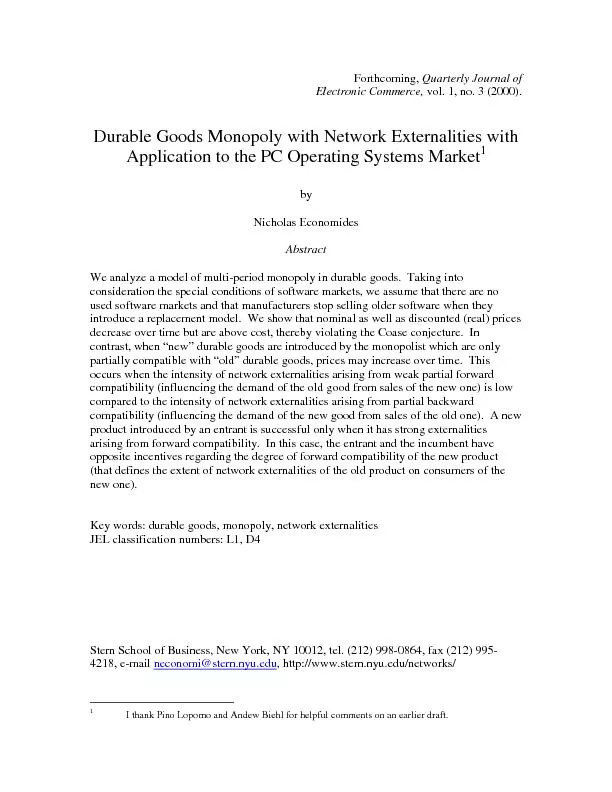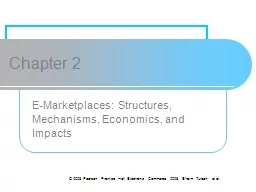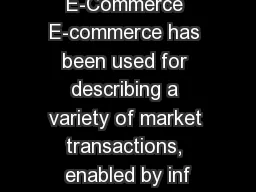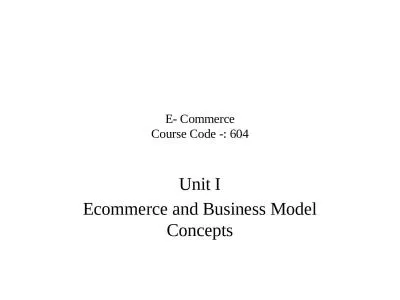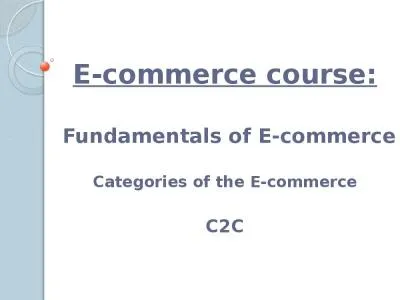PDF-Forthcoming, Quarterly Journal of Electronic Commerce, vol. 1, no. 3
Author : lindy-dunigan | Published Date : 2016-03-19
httpwwwsternnyuedunetworks I thank Pino Lopomo and Andew Biehl for helpful comments on an earlier draft Durable Goods Monopoly with Network Externalities with Application
Presentation Embed Code
Download Presentation
Download Presentation The PPT/PDF document "Forthcoming, Quarterly Journal of Elect..." is the property of its rightful owner. Permission is granted to download and print the materials on this website for personal, non-commercial use only, and to display it on your personal computer provided you do not modify the materials and that you retain all copyright notices contained in the materials. By downloading content from our website, you accept the terms of this agreement.
Forthcoming, Quarterly Journal of Electronic Commerce, vol. 1, no. 3: Transcript
Download Rules Of Document
"Forthcoming, Quarterly Journal of Electronic Commerce, vol. 1, no. 3"The content belongs to its owner. You may download and print it for personal use, without modification, and keep all copyright notices. By downloading, you agree to these terms.
Related Documents

